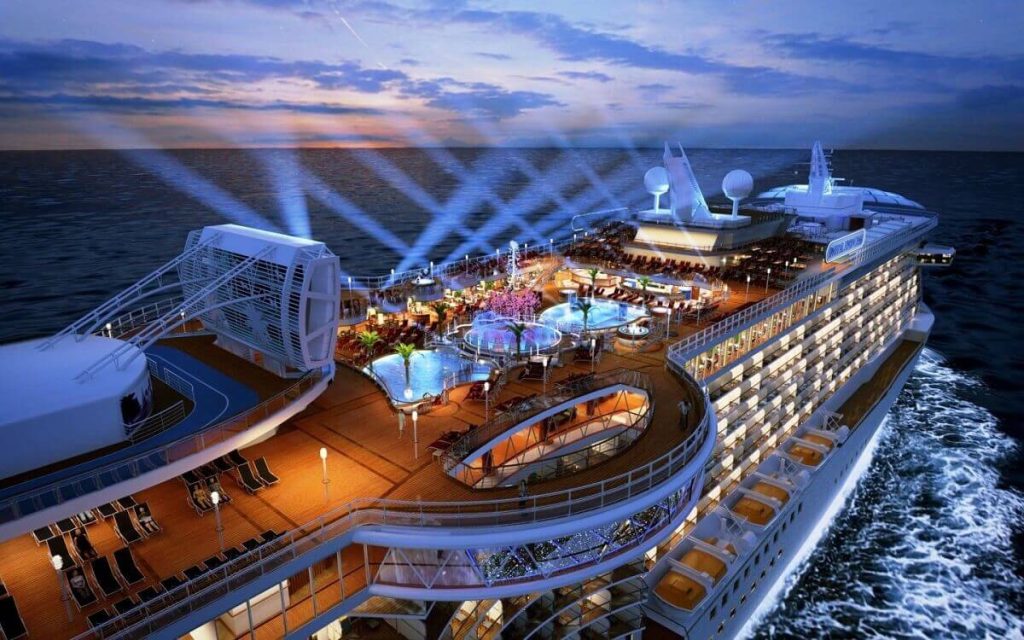From Rio's samba spectacle to Venice's masked elegance, explore 10 unique festivals that showcase human creativity, cultural diversity, and the universal spirit of celebration. Uncover…


Cork is the second-largest city in Ireland and the administrative center of County Cork, with a population of 224,004 according to the 2022 census. This dynamic metropolitan hub, located in the province of Munster, is the third-largest city on the island of Ireland. The city’s distinctive topography is characterized by its core, located on an island created by two channels of the River Lee. These canals meet at the eastern terminus of the city, where an extensive network of quays and docks extends into Lough Mahon and Cork Harbour, recognized as one of the greatest natural ports globally.
Cork’s extensive history originates in the 6th century, when it was founded as a monastic community. The city’s growth underwent a notable transformation in 915 when Viking invaders augmented the community. A crucial event in Cork’s history occurred in 1185 when Prince John conferred the city its charter, therefore affirming its significance and position. In medieval times, Cork was completely surrounded by walls, vestiges of which are still visible along South and North Main streets, providing a concrete connection to the city’s historical heritage.
Cork’s designation as “the rebel city” is firmly established in its historical alignment with the Yorkist cause during the Wars of the Roses. This defiant attitude has persisted over the years, appearing in many expressions of resistance and autonomy. Corkonians occasionally refer to their cherished city as “the real capital,” a phrase that gained significance during the Irish Civil War when Cork opposed the Anglo-Irish Treaty.
The architectural landscape of Cork reflects its extensive and diverse history, including significant structures from the Medieval era to contemporary periods. Although much of the medieval city has succumbed to the ravages of time, the Red Abbey remains a singular and formidable testament to this period. The skyline of the city is characterized by two churches, each with a distinct narrative and architectural importance. St. Mary’s Cathedral, sometimes referred to as the North Cathedral, was established in 1808, with its notable tower constructed in the 1860s. Saint Fin Barre’s Cathedral, catering to the Church of Ireland community, is arguably the better renowned of the two. Conceived by the illustrious architect William Burges, the building of this Gothic Revival edifice commenced in 1862 and concluded in 1879, built upon the remnants of a prior cathedral.
St. Patrick’s Street, the principal thoroughfare in Cork’s city center, epitomizes the city’s fusion of historical and contemporary elements. This curving road, remodeled in the mid-2000s, serves as a center of commercial activity, with architecturally notable structures. The unique design is a remnant of its history as a conduit for the River Lee, which was subsequently constructed over with arches. At the northern terminus of the street is a notable statue of Father Matthew, a significant figure in Cork’s history.
The General Post Office on Oliver Plunkett Street is an architectural masterpiece, its limestone façade a prominent feature in the urban landscape. The location possesses a vibrant history, having once housed the Theatre Royal, established in 1760 and consumed by fire in 1840. In a notable development, English circus owner Pablo Fanque erected an amphitheater on the site in 1850, which subsequently evolved into a theatre before ultimately becoming the General Post Office in 1877.
The Grand Parade, with a tree-lined promenade, functions as a commercial and financial sector, while the South Mall represents the city’s historical financial hub. Numerous banks on the South Mall include interiors reminiscent of the 19th century, with the Allied Irish Bank exemplifying well-preserved historical architecture.
Cork is renowned for its Georgian architecture; however, the city embraces modern design as well. The County Hall tower, formerly the highest structure in Ireland, exemplifies Cork’s adoption of modern design. This term was subsequently appropriated by another Cork edifice, The Elysian. Adjacent to the County Hall, tourists may observe the humorous sculpture depicting two guys, endearingly referred to the locals as ‘Cha and Miah’.
Opposite County Hall, situated across the river, is the former Our Lady’s Psychiatric Hospital, which was formerly the longest structure in Ireland. This Victorian-era edifice has been revitalized through partial refurbishment and transformed into a residential complex named Atkins Hall, in tribute to its original architect, William Atkins.
Any discourse on Cork’s architectural environment must include the church tower of St. Anne in Shandon. This emblematic edifice, universally acknowledged as the city’s symbol, dominates the Northside skyline. The distinctive design incorporates red sandstone on the northern and eastern facades, while the main white limestone adorns the western and southern facades. A weather vane shaped like an eleven-foot fish is situated atop the tower, imparting a whimsical element to this cherished landmark.
Skiddy’s Almshouse, located in the Shandon district, serves as a significant reminder of Cork’s socioeconomic past. This 18th-century edifice was meant to house the city’s most destitute people, exemplifying the community’s dedication to social welfare in earlier times.
Cork, being a contemporary and prosperous city, is effectively linked to the global community via Cork Airport. Situated on the southern periphery of the city adjacent to Ballygarvan, it ranks as the second busiest airport in the Republic of Ireland. The airport is vital to Cork’s economy and its international city status, with nine airlines providing flights to more than 45 European destinations.
Currency
Founded
Calling code
Population
Area
Official language
Elevation
Time zone
Ireland is an island republic located in the North Atlantic Ocean off the northwestern coast of mainland Europe, with a population of around 7 million as of 2022. This island, the third-largest in Europe and the twentieth-largest worldwide, is geopolitically partitioned…
Kilkenny, located in County Kilkenny, Ireland, has a population of 27,184 according to the 2022 census, ranking it as the thirteenth-largest urban center in the nation. This lovely city, situated in the South-East…
Galway, a dynamic city located on Ireland’s western coast, is the most populated urban area in the province of Connacht. Situated at the confluence of the River Corrib and Galway Bay, this urban center has…
Dublin, the capital of Ireland, is a dynamic city located on a bay at the estuary of the River Liffey in the province of Leinster. According to the 2022 census, the city council area…
From Rio's samba spectacle to Venice's masked elegance, explore 10 unique festivals that showcase human creativity, cultural diversity, and the universal spirit of celebration. Uncover…

While many of Europe's magnificent cities remain eclipsed by their more well-known counterparts, it is a treasure store of enchanted towns. From the artistic appeal…

From Alexander the Great's inception to its modern form, the city has stayed a lighthouse of knowledge, variety, and beauty. Its ageless appeal stems from…

Home France is recognized for its significant cultural heritage, exceptional cuisine, and attractive landscapes, making it the most visited country in the world. From seeing…

Boat travel—especially on a cruise—offers a distinctive and all-inclusive vacation. Still, there are benefits and drawbacks to take into account, much as with any kind…

© All Rights Reserved. By Travel S Helper